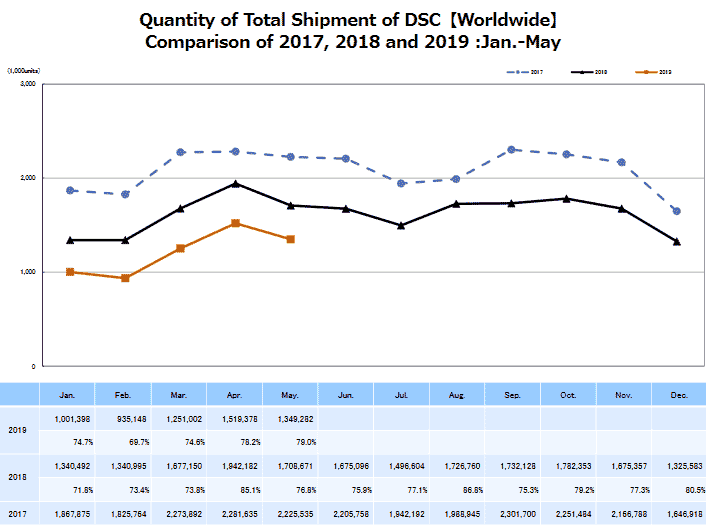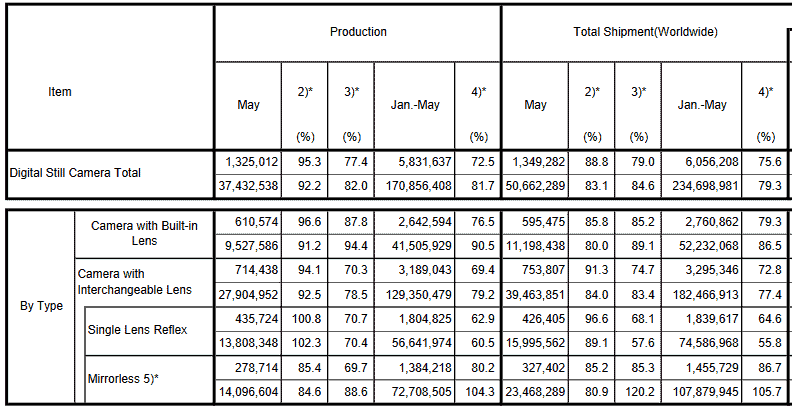Camera production and shipment figures from the Japanese camera manufacturers’ group, CIPA, indicates a shrinking market in all segments, with DSLRs in something close to the free fall digital compacts were experiencing in previous years.

However, there are indications that from an average selling price perspective, the story isn’t a total disaster.
In terms of the numbers of cameras shipped, compacts are down to 85 percent of the levels achieved in Jan-May 2018. No doubt the brisk sales of Fujifilm Instax cameras have helped keep this decline in check.
DSLRs are at just 65 percent when Jan-May 2018 shipments are compared to Jan-May this year. Worse still, the total value of all those DSLRs shipped is just 56 percent of 2018 levels. Retailers are selling way fewer DSLRs, with a lower average selling price rubbing salt into the wound.

The hope for the global photographic industry is with the relatively new mirrorless category, where the decline compared to Jan-May 2018 is ‘only’ to 87 percent, while mirrorless cameras achieved an increase of 6 percent in revenue terms. So while fewer cameras were sold, they were achieving a considerably higher average selling price.
The radical change in the camera market is underscored by the fact that interchangeable lens cameras now outsell compact by a considerable margin – to May this year there were around 3.29 million interchangeable cameras sold and just 2.76 million compacts. This probably indicates the substitution effect of smartphones – snapshooter photographers have never really had an alternative to ‘instamatic’-type compacts until the last few years.
When we look at lens shipments it appears that demand for lenses for full-frame cameras is stronger than for smaller formats. Shipments for full-frame and above lenses (CIPA doesn’t measure on a mirrorless versus DSLR lens scale) are at around 90 percent on unit terms and revenue is actually 2.5 percent higher.
Combine the lens and camera shipment data, and the small sweet spot for revenue seems to be full-frame mirrorless cameras and lenses.





Be First to Comment